The No-Fail Guide to Authentic German Bread Dumplings (Semmelknödel)
Let’s be honest, there are two kinds of homemade bread dumplings: the light, savory ones that soak up gravy like a dream, and the dense, gummy cannonballs that sink to the bottom of your plate. If you’ve been living in fear of making the second kind, you’ve come to the right place. We’re going to break down the traditional method, step-by-step, so you can make perfect Semmelknödel every single time.
In this article
And before we dive in, here are the quick details. You’re looking at about 90 minutes of total time, but only 30 minutes of that is active work—the rest is just resting and simmering. This recipe makes about 6-8 dumplings, perfect for 4-6 people as a side dish. The best part? You can make a whole batch for under $10, since it’s designed to use up stale bread and pantry staples. It’s resourcefulness at its most delicious.
Why It Works: The Secrets Behind a Perfect Dumpling
Great dumplings aren’t about fancy ingredients; they’re about technique. Understanding the ‘why’ behind each step turns guessing into knowing. It all comes down to a few key interactions between bread, milk, and eggs.
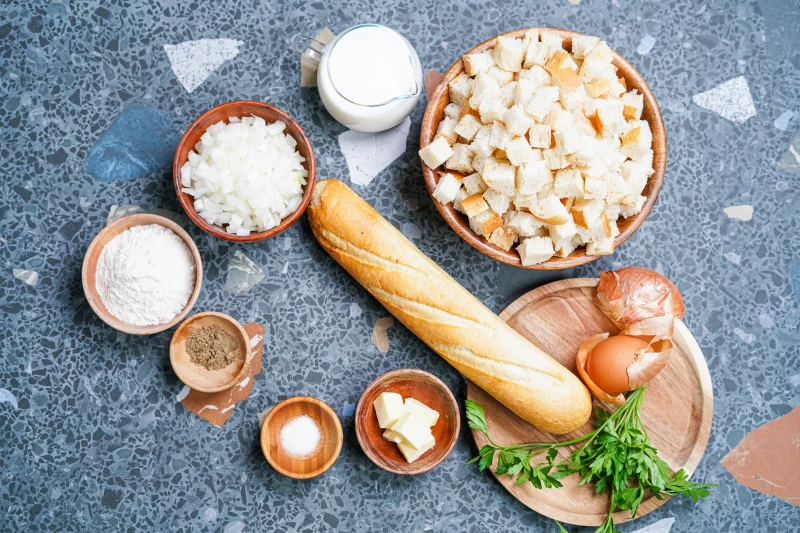
Stale Bread Isn’t Just a Suggestion—It’s a Requirement
This is the big one. You absolutely cannot use fresh bread. Fresh bread is soft and full of moisture. If you add more liquid to it, you get a soggy, pasty disaster that leads straight to those gummy cannonballs.
When bread stales, it dries out and becomes a sort of rigid sponge. Its structure is full of tiny empty spaces, just waiting to absorb the seasoned milk and egg mixture perfectly. This allows the bread cubes to soften without completely disintegrating. Your goal is to rehydrate the bread into a pliable mass, not create bread soup. The ideal bread is crusty, dry, and brittle, but not a rock-hard, pre-packaged crouton, which can be too dry to rehydrate properly. Leftover Kaiser rolls or a simple crusty white loaf are your best friends here.
The Magic of Binders and Fat
The milk and eggs are what hold everything together. Whole milk is the traditional choice for a reason—its fat content adds richness and results in a much softer, more tender dumpling. You can use low-fat milk in a pinch, but you’ll notice a difference in flavor and texture.
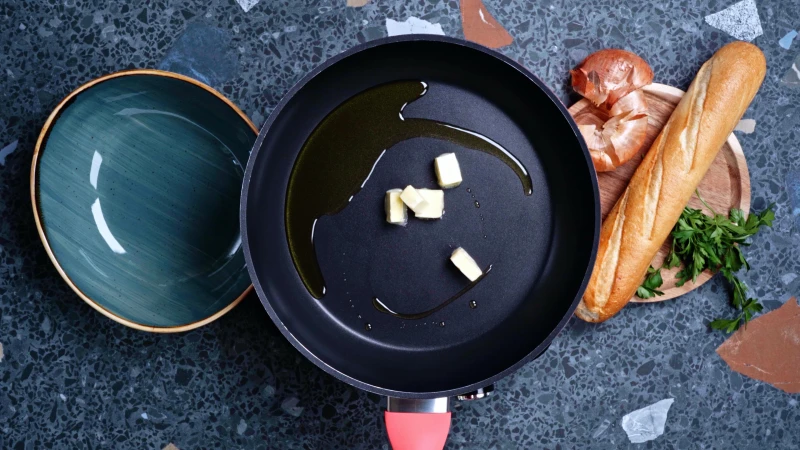
Eggs are the glue. When you simmer the dumplings, the egg proteins cook and solidify, creating a delicate network that binds the bread. Too little egg, and your dumplings will fall apart in the water. Too much, and they can get tough or rubbery. It’s a balance.
The Golden Rule: Simmer, Never Boil
This is a non-negotiable rule I’ve stressed to every cook I’ve ever trained. A rolling, violent boil will physically tear your dumplings apart before the egg has a chance to set. You want a gentle simmer. What does that look like? Think slow, lazy bubbles rising to the surface, not a frantic, churning boil. If you have a thermometer, the sweet spot is around 203°F (95°C). This gentle heat allows the dumplings to cook through evenly, firming them up from the inside out without any stress.
Getting the Right Stuff: Your Shopping List
With so few ingredients, quality really matters. There’s nowhere for a subpar ingredient to hide. You can find everything you need at a standard grocery store like Kroger or Safeway.

- The Bread: The star of the show. You’ll need about 250 grams of stale, crusty white bread rolls (that’s about 5-6 standard Kaiser rolls). If your rolls are fresh, just slice them up and leave them in a paper bag on the counter for a day or two. In a hurry? You can slice them and bake them in a low oven, around 250°F (120°C), for 20-30 minutes until they’re crisp. Just don’t let them brown!
- The Aromatics: One medium yellow onion and a good bunch of fresh, flat-leaf parsley. Don’t even think about using dried parsley—it just doesn’t have the bright, clean flavor you need.
- The Binders & Fat: You’ll need 2 large eggs, about a cup (250 ml) of whole milk, and a couple of tablespoons of unsalted butter for sautéing the onions.
- Seasoning & Spices: Just salt, freshly ground black pepper, and a pinch of nutmeg. Freshly grated nutmeg makes a world of difference.
- The ‘Just-in-Case’ Ingredient: Have some fine breadcrumbs or all-purpose flour on hand. You might need a tablespoon or two if your mixture is a bit too wet.
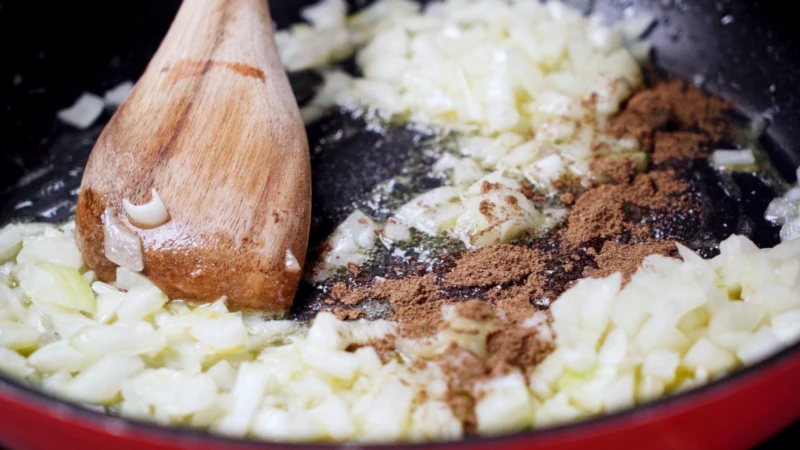
The Step-by-Step Method to Flawless Dumplings
Grab a large mixing bowl, a small frying pan, and a big pot for simmering. Let’s do this.
Step 1: Prep the Bread and Flavor Base
Cut your stale bread into small cubes, about half an inch. Don’t make them too small, or they’ll get mushy. Put them in your big mixing bowl. Next, melt the butter in your pan over medium heat and gently sauté the finely chopped onion for 5-7 minutes until it’s soft and translucent, but not brown. While that’s going, gently warm the milk in a saucepan. It should be warm to the touch, not hot.
Step 2: The Soak and Rest (Do Not Skip This!)
Pour the warm milk over the bread cubes. In a separate small bowl, whisk the eggs with the salt, pepper, and nutmeg. Add the cooked onions (and all that buttery goodness from the pan!) and the chopped parsley to the egg mixture. Pour this over the bread. Now, get your hands in there and gently combine everything, squeezing lightly so the bread absorbs the liquid. Cover the bowl and let it rest for at least 30 minutes. This rest is critical for the bread to fully hydrate and for the mixture to firm up.
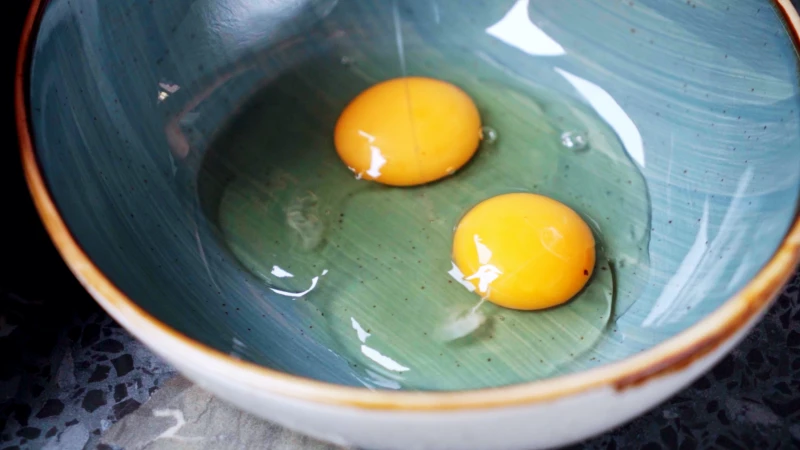
Step 3: Check, Form, and Shape
After resting, the mixture should feel like cool, damp modeling clay—it holds together when squeezed but isn’t overly sticky. If it feels too wet and sloppy, it’s time for that just-in-case ingredient. Add a tablespoon of fine breadcrumbs (best option) or all-purpose flour. Breadcrumbs are better because they maintain the bready texture, while flour can make the dumplings a tad denser. Mix it in and let it rest another 10 minutes. Wet your hands with a little cold water to prevent sticking, then scoop up a portion of the mixture about the size of a tennis ball. Gently roll and press it between your palms to form a tight, smooth ball, squeezing out any air pockets.
Step 4: The Test Dumpling and the Main Event
This is the pro habit that will save you from disaster. Let me tell you, I once got cocky and skipped the test dumpling for a big event. I lost an entire batch to a pot of bread porridge and had a very unhappy client. Never again. ALWAYS test one dumpling!
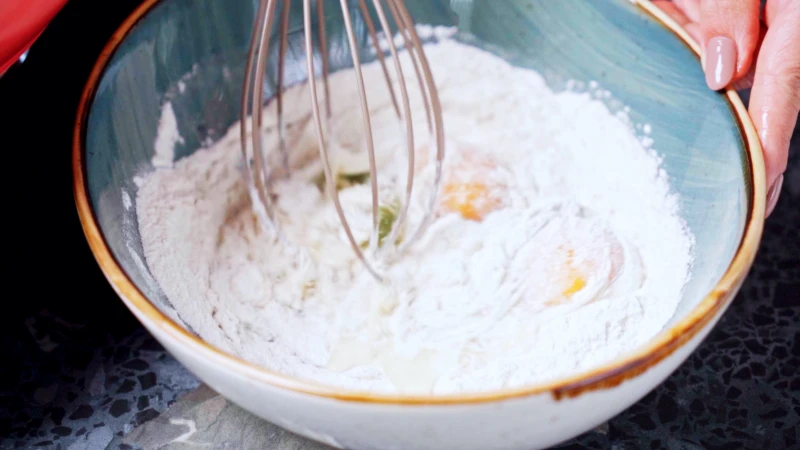
Bring a large pot of generously salted water to a boil, then reduce the heat to that lazy simmer we talked about. A good rule of thumb is 1 tablespoon of salt for every 2 quarts of water. Carefully lower one test dumpling into the water and let it simmer for 20 minutes. If it holds together, you’re golden! If it starts to fall apart, your mixture needs a little more help. Just work another tablespoon of breadcrumbs into the remaining mix. Once you’re confident, carefully add the rest of your dumplings to the pot, making sure not to overcrowd them. Let them simmer for 20-25 minutes. They’ll float after about 10 minutes, but they need the full time to cook through. Remove them with a spider strainer or large slotted spoon.
The Dumpling Emergency Room: Troubleshooting 101
Things went wrong? It happens to everyone. Here’s how to diagnose the problem.
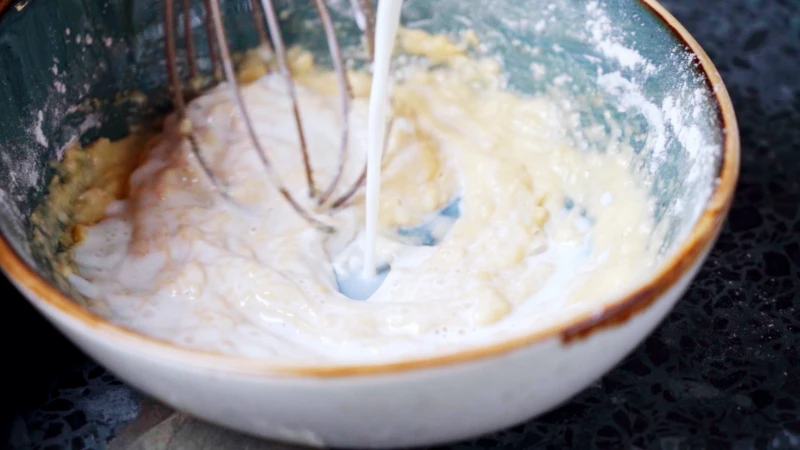
- “Help! My dumplings disintegrated!” This is the most common issue. It usually means one of three things: your mixture was too wet, you didn’t have enough binder (egg), or you boiled the water instead of simmering it.
- “Why are my dumplings hard as rocks?” This is the opposite problem. You likely used bread that was too fresh, added too much flour to your mix, or you compacted the dumplings way too tightly when forming them.
- “The outside is cooked, but the inside is still mushy.” You probably pulled them out too early. Even after they float, they need that full 20-25 minutes for the center to cook and set completely.
How to Serve Them (and What to Do with Leftovers)
This batch makes about 6-8 dumplings, which is a perfect side dish for four people alongside a roast pork or sauerbraten. It’s also a fantastic main course for two or three people when smothered in a creamy mushroom sauce (a dish called Rahmschwammerl).
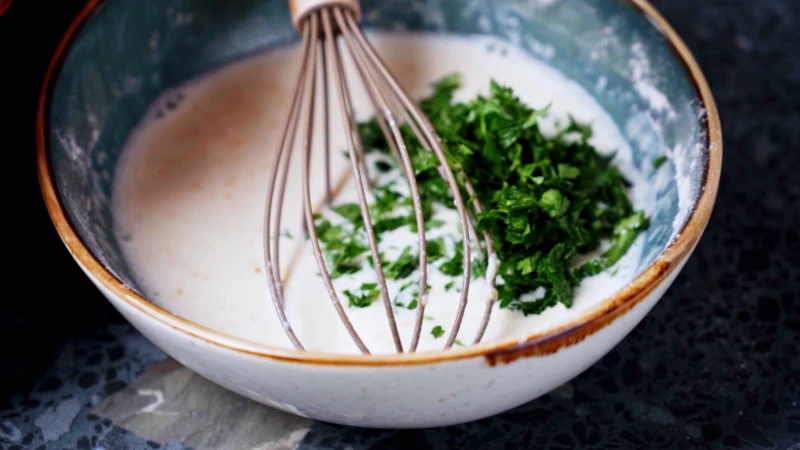
By the way, the leftovers are maybe even better than the main event. The next day, slice the cold dumplings into thick rounds and pan-fry them in butter until golden brown and crispy on both sides. Sometimes they’re served with a scrambled egg mixed in. It’s a delicacy all on its own.
Pro Tips for Next Time
Once you’ve nailed the basic recipe, feel free to experiment. You can add finely chopped bacon (Speck) with the onions, or stir in some wilted spinach or small cubes of cheese like Gruyère.
Quick tip: Can you prep them ahead of time? Absolutely. You can form the raw dumplings, place them on a lightly floured tray, cover them, and pop them in the fridge for up to a couple of hours before you need to cook them. It’s a great trick for managing your time for a big dinner.
They also freeze beautifully. Just cook them fully, let them cool, and freeze them on a baking sheet before transferring to a bag. To reheat, just drop the frozen dumplings into simmering water for 10-15 minutes.
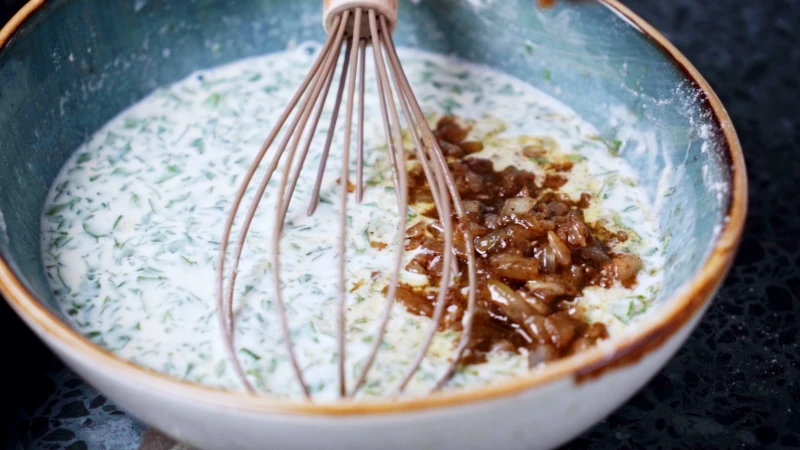
Cooking is a craft that lives in your hands, not just on a webpage. Your first batch is practice, so pay attention, trust your senses, and don’t worry if it isn’t perfect. You’re bringing a delicious tradition into your kitchen, and the reward is so worth it.
Inspiration:
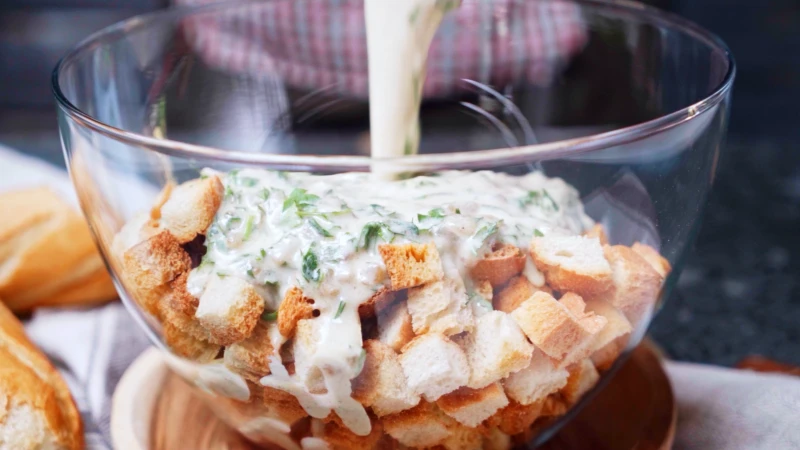
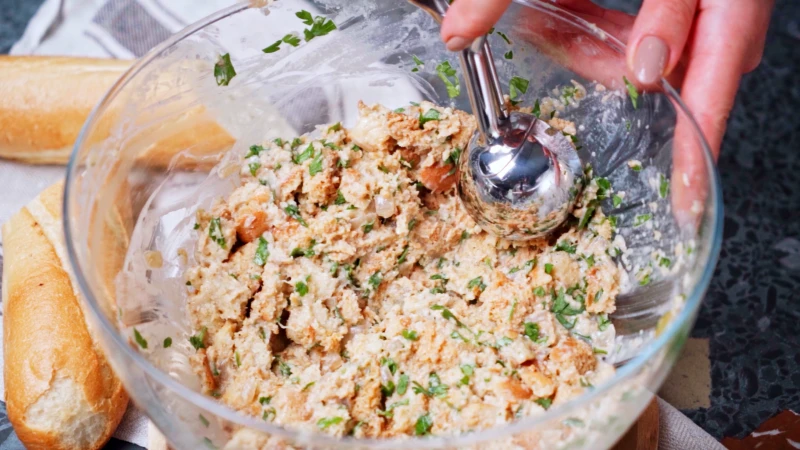
In many parts of Bavaria, a Sunday roast served without Knödel is considered an incomplete meal.
This isn’t just a side dish; it’s a cultural staple. Bread dumplings are the traditional partner to dishes like Schweinshaxe (pork knuckle) and Sauerbraten because their soft, absorbent texture is perfect for sopping up every last drop of rich, savory gravy—a role they’ve proudly filled for centuries.
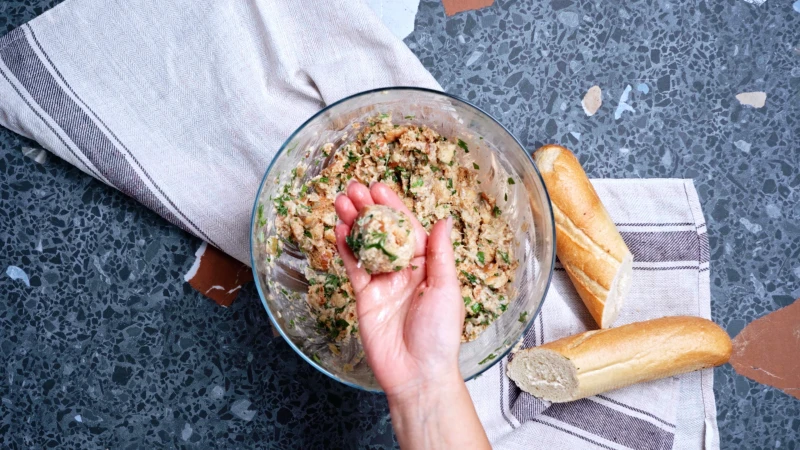
Want to elevate the flavor? The choice of bread is your first opportunity. While Kaiser rolls are the standard, try using day-old pretzel rolls (Laugengebäck) for a deeper, maltier taste that’s incredibly delicious. Their dense, dark crust adds a subtle complexity that beautifully complements pork dishes and rich gravies.
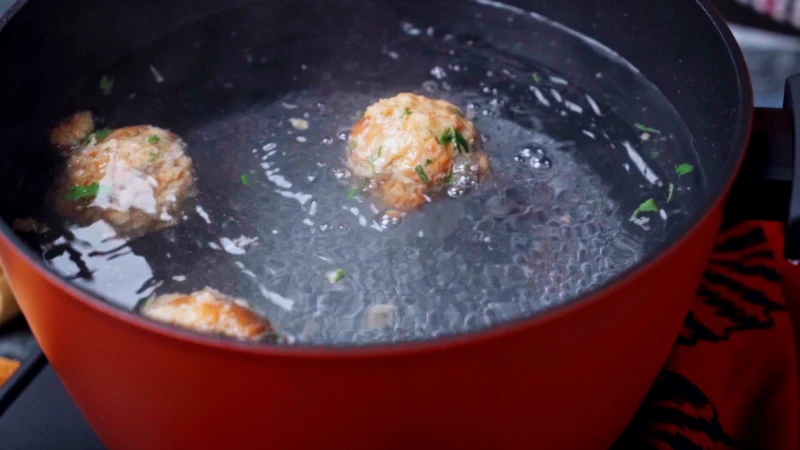
My dumpling mixture feels too wet or too dry. How do I fix it?
Don’t panic; the dough is very forgiving! If it feels overly sticky and wet, add fine, plain breadcrumbs one tablespoon at a time until it’s pliable. If it’s crumbly and won’t hold together, drizzle in a tiny bit more warm milk and mix gently. To check your seasoning before cooking the whole batch, fry a small spoonful of the mixture in a bit of butter—it’s a tiny ‘tester’ patty.

- Uniformly sized for perfect, even cooking.
- A fast, clean shaping process with no sticky hands.
The secret used by German grandmothers and professional chefs alike? A standard ice cream scoop. A quick dip in a cup of cold water between each scoop prevents the mixture from sticking, giving you perfect spheres without the mess.
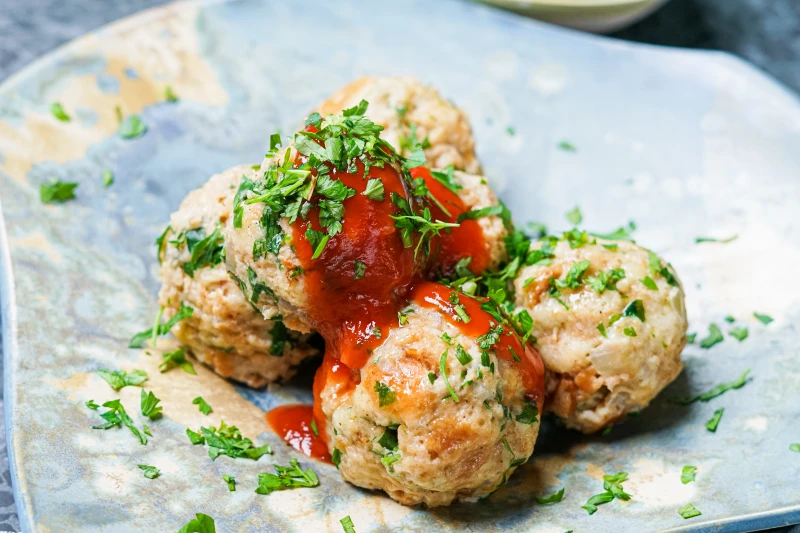
Once you’ve mastered the classic recipe, you can start personalizing it. These dumplings are a wonderful canvas for other flavors. Try adding:
- Finely diced and sautéed speck or high-quality bacon for a smoky, savory kick.
- A handful of shredded cheese like Gruyère or Emmentaler for a molten, nutty surprise inside.
- A switch of herbs—try substituting half the parsley with fresh marjoram for a more floral, earthy aroma.
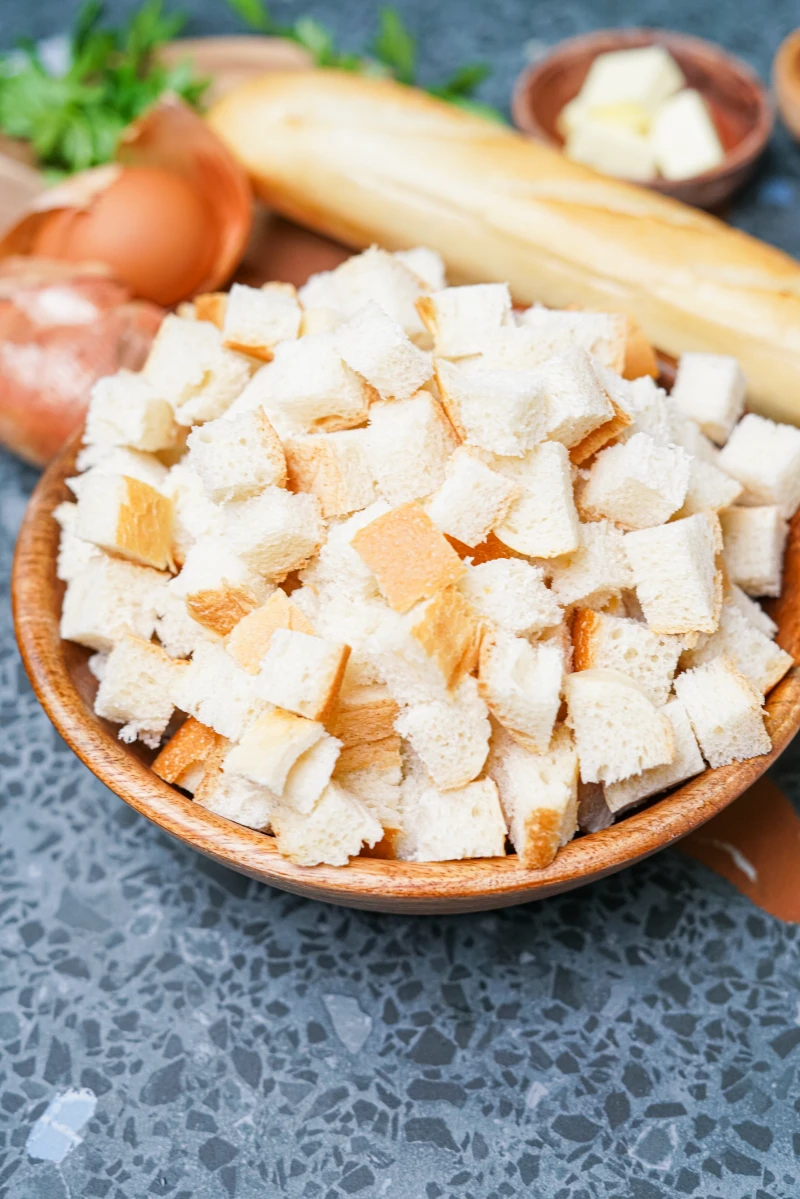
The Classic Soak: Served whole, straight from the simmering water. This is the traditional method, ideal for nestling next to a roast and soaking up generous amounts of gravy, like a classic mushroom sauce (Jägersoße).
The Crispy Pan-Fry: A fantastic way to use leftovers. Chill the cooked dumplings, slice them into thick coins, and pan-fry them in butter until golden and crisp on both sides. Serve with a simple green salad or top with a fried egg for a hearty lunch.
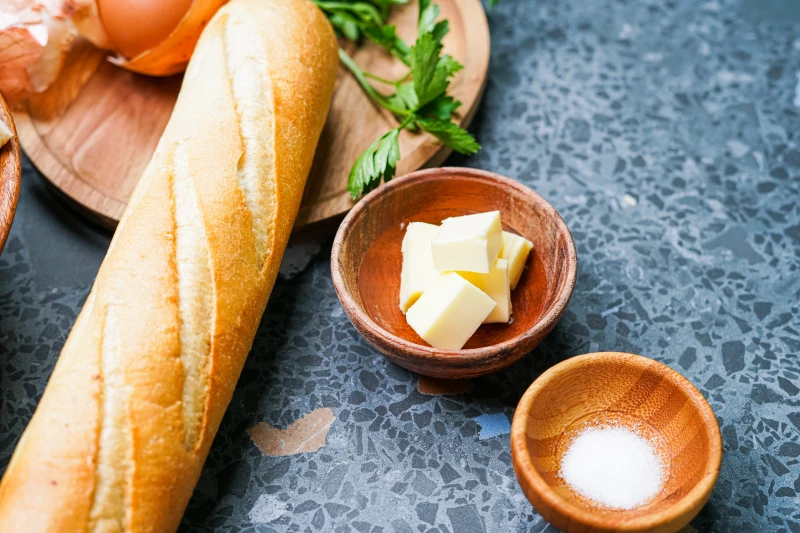
The true scent of comfort: It isn’t just one thing. It’s the earthy perfume of fresh parsley, the savory depth of onions softened in good butter—like Kerrygold or Lurpak—and the gentle, creamy aroma of warm milk. This is the smell that fills a German kitchen on a Sunday, a promise of a hearty, soulful meal to come.
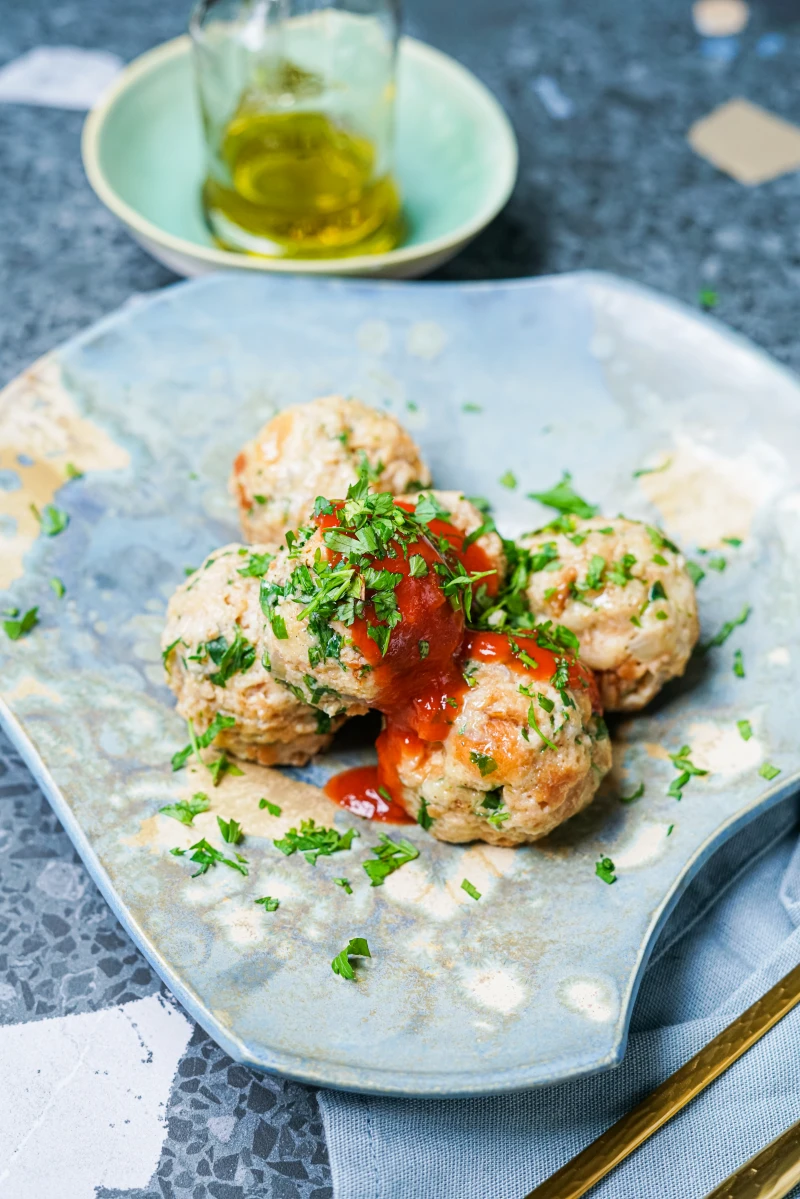
- If your dumplings begin to fall apart in the water, it’s often because the water is boiling too vigorously. Reduce the heat immediately to a very gentle simmer.
- A ‘test dumpling’ is your best friend. Cook one before adding the rest to ensure your mixture holds together perfectly.
- For extra insurance, you can wrap each dumpling in plastic wrap or cheesecloth before simmering, especially on your first try.
According to a study by the University of Stuttgart, private households in Germany waste approximately 6.7 million tons of food each year, with bakery products being one of the largest categories.
Semmelknödel aren’t just delicious; they are a direct and time-honored solution to this very problem. This recipe embodies the thrifty, ‘waste-not, want-not’ spirit of traditional home cooking, turning what might be discarded into the star of the table.










